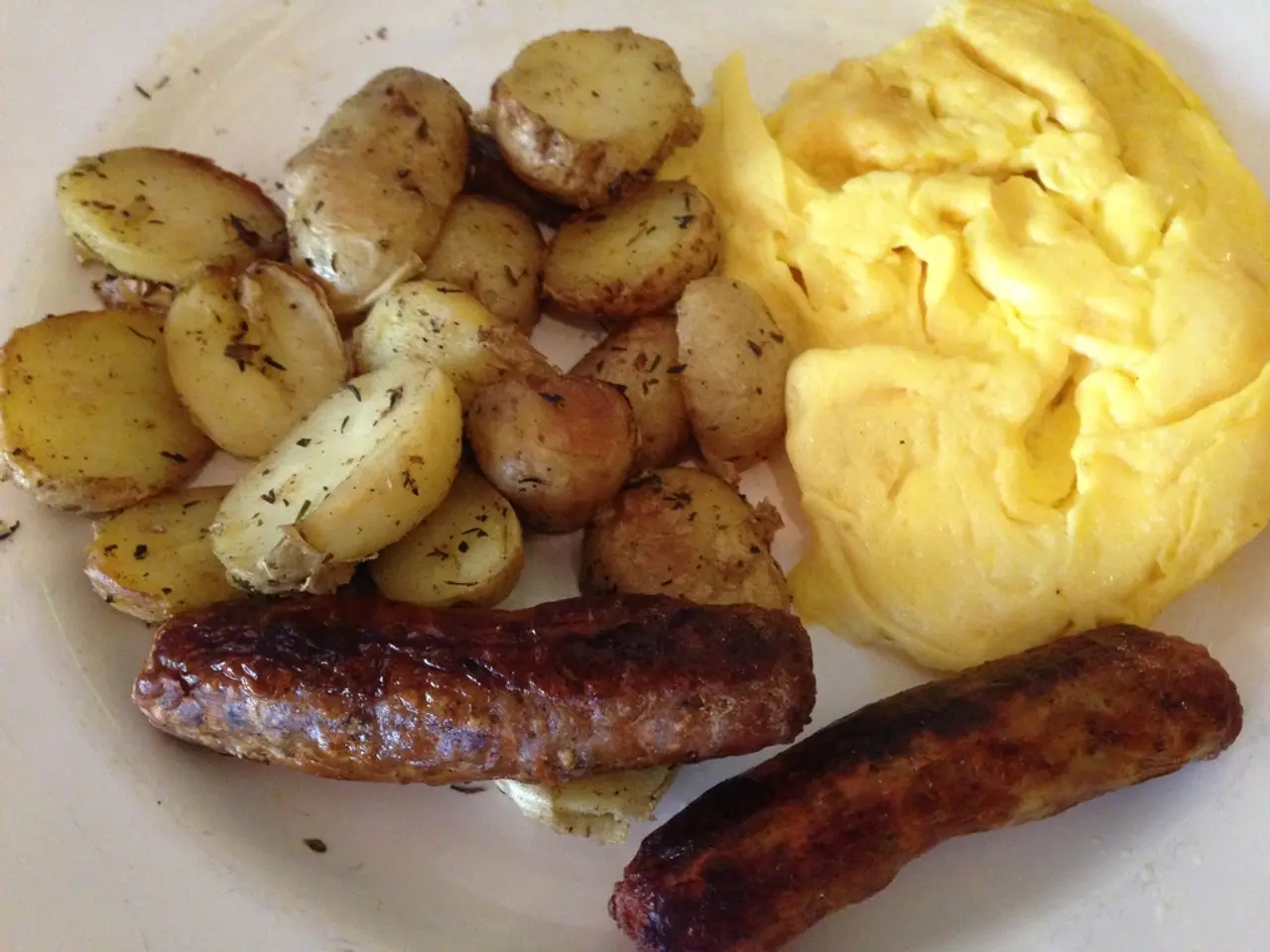Prepare Homemade Dog Meals at Home Yourself
In the quest for providing the best for our beloved pets, many pet owners are turning to homemade dog food. This approach offers the advantage of controlling the quality and type of ingredients, ensuring a diet that is free from fillers, artificial additives, and potential allergens.
A balanced homemade dog food recipe involves maintaining the right proportions of essential nutrients, such as protein, fat, carbohydrates, calcium, and essential fatty acids. Let's delve into the recommended nutrient ratios for a well-rounded homemade dog food diet.
## Nutrient Ratios for Balanced Homemade Dog Food
1. **Protein**: Dogs require a significant amount of protein. A general recommendation is to ensure that protein makes up about 25-30% of the diet on a dry matter basis for adult dogs, although this can vary depending on factors like age and activity level.
2. **Fat**: The Association of American Feed Control Officials (AAFCO) recommends a minimum of 5.5% fat for adult maintenance and 8.5% for growth and reproduction on a dry matter basis. Fats provide energy and support the absorption of fat-soluble vitamins.
3. **Carbohydrates**: There is no specific requirement for carbohydrates, but they often make up a significant portion of commercial dog foods (30-60%). For homemade diets, you can choose low to moderate carbohydrate levels by including grains like rice, oats, or vegetables.
4. **Calcium**: Dogs require calcium for bone health. A general guideline is to maintain a calcium-to-phosphorus ratio of about 1.2:1 to 1.5:1. This can be achieved by including sources like bone meal or crushed eggshells.
5. **Essential Fatty Acids (EFAs)**: Omega-3 and omega-6 fatty acids are crucial for skin health and inflammation control. Sources include flaxseed, canola, and fish oil for omega-3, and vegetable oils or animal fats for omega-6.
## Sample Recipe
Here's a simple recipe that balances these nutrients:
- **Meat**: 1 lb. ground beef, ½ lb. ground chicken, ½ lb. ground turkey (high protein sources) - **Grains/Vegetables**: 3 cups brown rice, 1 lb. baby carrots, 2 small potatoes (carbohydrate sources) - **Fat Sources**: Use the natural fat from the meats and consider adding a small amount of fish oil for omega-3 fatty acids. - **Calcium**: Add bone meal or crushed eggshells to achieve the desired calcium-to-phosphorus ratio. - **Eggs**: 3 beaten eggs (additional protein source) - **Broth/Water**: Use chicken broth and water to maintain moisture and palatability.
Always consult with a veterinarian before making significant changes to your dog's diet to ensure the recipe meets their specific nutritional needs. In some cases, a vet might advise feeding a sick dog a bland diet of chicken and rice.
To serve, defrost the food in the fridge overnight and heat for 15-30 seconds. Protein sources can range from chicken, turkey, beef, or fish, while carbohydrate sources can be brown rice, quinoa, or sweet potatoes.
Ensuring nutritional adequacy is critical by monitoring weight, energy levels, coat condition, and stool quality. Supplements may include calcium (ground eggshells) and vitamins. Regular health checkups are vital to adjust the diet as needed.
Onions, garlic, chocolate, grapes, or excessive salt should be avoided. For those seeking assistance in creating homemade dog food recipes, resources like Balance IT can provide a wealth of options. Making homemade dog food allows one to know exactly what is in the dog's food, fostering peace of mind for pet owners.
The author, after researching homemade dog food, found many kinds of vegetables that are safe for dogs to consume. A balanced homemade dog food recipe should include protein, carbohydrates, vegetables, fats, supplements, and avoid harmful ingredients. With careful planning and consultation with a veterinarian or pet nutritionist, creating a homemade dog food diet can be a rewarding and beneficial experience for both pet and owner.
In the process of knowing exactly what's in their pet's food, some home-and-garden enthusiasts also incorporate pet-friendly vegetables into their homemade dog food recipes. For instance, carrots are a suitable carbohydrate source in these diets, contributing to a balanced lifestyle for pets.
Moreover, creating a well-rounded homemade dog food diet can extend beyond the kitchen, into the home-and-garden area, as some pet owners discover the benefits of growing pet-safe plants in their garden, such as catnip or mint, which can serve as enriching additions to their pets' living environment.




